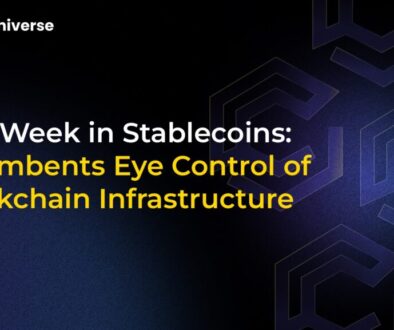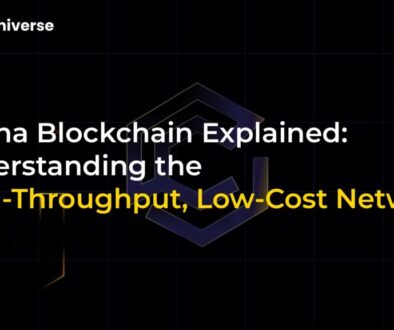Ethereum’s Fusaka Upgrade: How the Next Big Leap Will Redefine Blockchain Scalability

Ethereum’s Fusaka Upgrade: How the Will Redefine Blockchain Scalability
Mark your calendars. On December 3, 2023, the Ethereum network is scheduled for a monumental transformation. Known as the Fusaka upgrade, this is far more than a routine update; it’s a foundational shift designed to tackle one of blockchain’s most persistent challenges: scalability. For developers, startups, and users across the Web3 ecosystem, understanding Ethereum’s Fusaka Upgrade is crucial, as it promises to lower costs, boost efficiency, and pave the way for a new era of decentralized applications.
This isn’t just about technical tweaks. It’s a strategic move to solidify Ethereum’s dominance as the leading smart contract platform, ensuring it can support the next wave of mass adoption.
What Exactly is the Fusaka Upgrade?
At its core, the Fusaka upgrade is laser-focused on expanding Ethereum’s data capacity, specifically through something called “blobs.” Think of blobs (Binary Large Objects) as dedicated data packets attached to Ethereum blocks. Before, all data had to compete for limited space within the block itself, making it expensive. By creating a separate, cheaper lane for data, Fusaka dramatically increases the network’s throughput.
This expansion is particularly vital for Layer-2 solutions like rollups (e.g., Arbitrum, Optimism), which bundle thousands of transactions off-chain and post a summary back to the main Ethereum chain. With more blob space, these Layer-2s can operate far more cheaply, and those savings are passed directly on to the end-user in the form of lower transaction fees.
The Engine Behind the Upgrade: Blob Parameter Only (BPO) Forks
So, how is Ethereum achieving this without causing a major disruption? The answer lies in a clever mechanism called Blob Parameter Only (BPO) forks. This technical approach allows core developers to incrementally increase the number of blobs per block without requiring node operators or users to perform complex software updates.
The rollout is planned in stages, starting with an initial capacity boost and followed by subsequent forks like BPO-1 and BPO-2. This methodical process ensures stability and a seamless transition. The initial estimates are staggering: post-Fusaka, Ethereum’s blob capacity could potentially double, a massive leap forward in the quest for scalability.
To ensure a flawless launch, the changes are being rigorously tested on three public testnets between October and November, underscoring the development team’s commitment to security and reliability.
Why Fusaka is a Game-Changer for the Web3 Ecosystem
The implications of the Fusaka upgrade ripple far beyond the core protocol. Here’s how it will impact different players in the space:
- For Web3 Startups: Lower operational costs are a lifeline. Startups building dApps, DeFi protocols, or NFT platforms on Ethereum can offer more competitive pricing and build more complex applications that were previously too expensive to run on-chain. This unlocks new business models and fosters innovation.
- For DAOs and Offshore Entities: As the regulatory landscape tightens, reliance on traditional finance becomes a liability. A more efficient and scalable Ethereum provides a robust foundation for decentralized autonomous organizations (DAOs) and global entities to manage treasuries and operations without depending on slow, centralized banking systems.
- For the Everyday User: The most immediate benefit will be cheaper and faster transactions on Layer-2 networks. This makes participating in DeFi, minting NFTs, and interacting with dApps more accessible to a broader audience, removing the barrier of high gas fees.
Beyond Fusaka: Ethereum’s Unfolding Roadmap
While the anticipation for Fusaka is high, it’s important to see it as a critical milestone in a much larger journey. The Ethereum development team operates with strategic foresight, planning a series of upgrades aimed at enhancing performance, security, and decentralization. Each update, from The Merge to Fusaka and beyond, builds upon the last, fortifying the network against future challenges.
This continuous evolution is what makes Ethereum so resilient. It’s not just reacting to problems; it’s proactively building the infrastructure for a decentralized future, one where blockchain technology can operate at a global scale.
Preparing for a More Scalable Future
The Fusaka upgrade on December 3rd represents a watershed moment for Ethereum. By dramatically increasing data capacity and lowering costs, it addresses the scalability trilemma head-on, setting the stage for unprecedented growth in 2024 and beyond.
As the network evolves, so too must its participants. For anyone building, investing, or simply using Ethereum, understanding these fundamental shifts is key to navigating the opportunities and challenges ahead. The future of decentralized finance is being built today, and with the Fusaka upgrade, its foundation is becoming stronger than ever.


